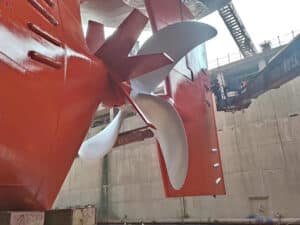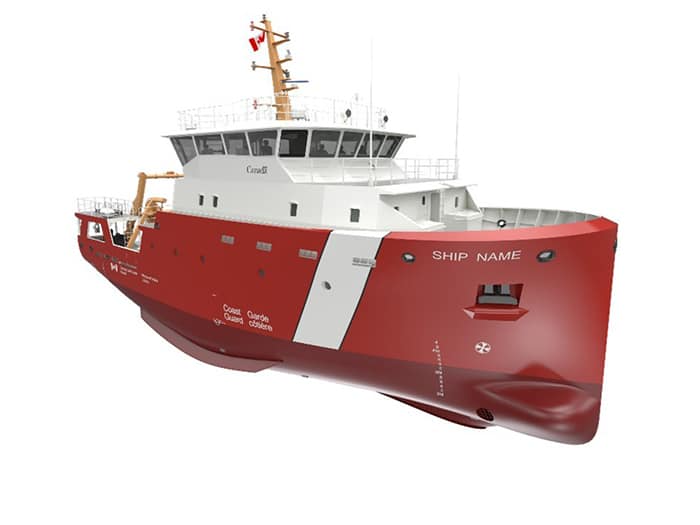
Canada orders first hybrid Coast Guard vessel
Written by Nick Blenkey
Canada's first hybrid Coast Guard vessel. [Image: Robert Allan Ltd.]
Public Services and Procurement Canada has awarded Gaspé, Quebec, shipbuilder Chantier Naval Forillon a CAD 55.5 million (about US$40.5 million) contract to build Canada’s first hybrid Coast Guard vessel: the new Near-Shore Fishery Research Vessel (NSFRV). The vessel is among those that was listed when Canada announced plans, back in May, to invest about US$1.8 billion in renewing the Canadian Coast Guard’s small vessel fleet.
Robert Allan Ltd was contracted to design the NSFRV in 2019.
The 32-meter long NSFRV is a specialized vessel for fisheries, oceanographic and hydrographic sciences. Outfitted with cutting-edge technologies in fisheries, oceanographic and hydrographic sciences, the new vessel will undertake critical research to collect the data and information needed to help guide decision-making for sustainable fisheries and healthy ecosystems in the St. Lawrence River and Gulf region. The vessel is expected to join the Canadian Coast Guard fleet as early as 2027.
The NSFRV design includes features focused on reducing power consumption, including a hybrid diesel-electric propulsion system with a battery bank and an energy-efficient electrical and deck equipment systems. In addition, the hull has been improved not only for maximizing hull efficiency but also for enhancing seakeeping and operational performance, all while limiting the overall size of the vessel.
Certain deck equipment powering systems were designed so that excess energy can be fed back into the batteries through regenerative braking. The gyroscopic stabilizing units, which consists of a control system that reduces tilting movements of the ship, are capable of feeding energy back to the batteries in certain navigation situations.
All electrical equipment (e.g. lights) have been selected to optimize power-efficiency and reduce discarded elements such as bulbs and tubes, throughout the vessel’s life-cycle by using long-life LED lights.
Where possible, pumps and fans have been specified as Variable Frequency Drive controlled, resulting in a reduced load on the motor when full power is not required, significantly reducing the consumption of fuel and electricity. The NSFRV’s battery bank will have the capability to be charged from on-shore power sources, or from on-board equipment. The vessel is able to perform some low speed operations on battery for 30-60 minutes per day. In addition, the batteries can support overnight operations to avoid using generators in harbor, and in so doing generate less pollution and ambient noise.
The ultimate goal for the hybrid Coast Guard vessel will be to match similar vessels already in service that have reached a 25% reduction in CO2 emissions and fuel savings through the change in technology and a change in operating practices.
The ship can accommodate a crew of five Canadian Coast Guard members and six Fisheries and Oceans scientists. It will be equipped with:
a dry lab
a wet lab
a mud room
an electronics room
The Near-Shore Fishery Research Vessel is designed to collect the fisheries and oceanographic data and information needed to understand marine environments and make sustainable decision for Canada’s fisheries and ecosystems. The vessel will also be available for Search and Rescue as well as other Canadian Coast Guard operations on an opportunity basis.




